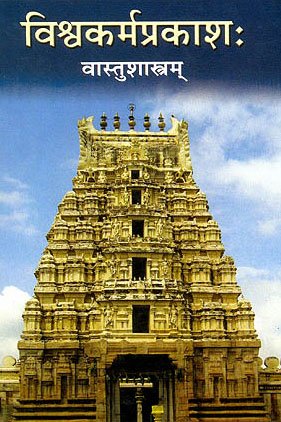Shadvarga, Ṣaḍvarga, Shash-varga: 10 definitions
Introduction:
Shadvarga means something in Hinduism, Sanskrit, Marathi. If you want to know the exact meaning, history, etymology or English translation of this term then check out the descriptions on this page. Add your comment or reference to a book if you want to contribute to this summary article.
The Sanskrit term Ṣaḍvarga can be transliterated into English as Sadvarga or Shadvarga, using the IAST transliteration scheme (?).
In Hinduism
Vastushastra (architecture)
Source: Shodhganga: Temples of Salem region Up to 1336 ADṢaḍvarga (षड्वर्ग).—According to the texts, the temple should consist of six main parts (ṣaḍvarga) in the elevation. They are adhiṣṭhāna, bhitti, prastara, grīva, śikhara and stūpi. The Texts refer to this part as vimāna. In this ṣaḍvarga, tower consisting of tiers is not included. The tower is then an optional member.
Source: OpenEdition books: Architectural terms contained in Ajitāgama and RauravāgamaṢaḍvarga (षड्वर्ग) refers to “—1. (building) with six levels of elevation §§ 3.12; 4.2.— 2. (the six āyādi formulas § 2.6)”.—(For paragraphs cf. Les enseignements architecturaux de l'Ajitāgama et du Rauravāgama by Bruno Dagens)

Vastushastra (वास्तुशास्त्र, vāstuśāstra) refers to the ancient Indian science (shastra) of architecture (vastu), dealing with topics such architecture, sculpture, town-building, fort building and various other constructions. Vastu also deals with the philosophy of the architectural relation with the cosmic universe.
Jyotisha (astronomy and astrology)
Source: Prabhupada Books: Sri Caitanya Caritamrta (jyotisha)Ṣaḍvarga (षड्वर्ग, “six divisions”) are technically called kṣetra, horā, drekkāṇa, navāṃśa, dvādaśāṃśa and triṃśāṃśa. According to Jyotir-vedic astrology, when the relationship between the planets and the rulers of these six divisions is determined, the auspiciousness of the moment of birth can be calculated. In the book named Bṛhaj-jātaka and other books there are directions for interpreting the movements of the stars and planets.

Jyotisha (ज्योतिष, jyotiṣa or jyotish) refers to ‘astronomy’ or “Vedic astrology” and represents the fifth of the six Vedangas (additional sciences to be studied along with the Vedas). Jyotisha concerns itself with the study and prediction of the movements of celestial bodies, in order to calculate the auspicious time for rituals and ceremonies.
Languages of India and abroad
Marathi-English dictionary
Source: DDSA: The Molesworth Marathi and English Dictionaryṣaḍvarga (षड्वर्ग).—m S A class of six vices or blemishes; viz. sexual passion, anger, cupidity, natural affection, pride, jealousy or envy. 2 A class or an aggregate of six objects generally.
Marathi is an Indo-European language having over 70 million native speakers people in (predominantly) Maharashtra India. Marathi, like many other Indo-Aryan languages, evolved from early forms of Prakrit, which itself is a subset of Sanskrit, one of the most ancient languages of the world.
Sanskrit dictionary
Source: Cologne Digital Sanskrit Dictionaries: Shabda-Sagara Sanskrit-English DictionaryṢaḍvarga (षड्वर्ग).—m.
(-rgaḥ) A class or aggregate of six, as of six defects or enemies of humanity taken together. viz:—“kāma” desire, “krodha” wrath, “lobha” covetousness, “moha” bewilderment, “mada” pride, and “mātmarya” envy. E. ṣaṣ six, and varga a class.
Source: Cologne Digital Sanskrit Dictionaries: Cappeller Sanskrit-English DictionaryṢaḍvarga (षड्वर्ग).—[masculine] six-group, aggregate of six things.
Source: Cologne Digital Sanskrit Dictionaries: Monier-Williams Sanskrit-English Dictionary1) Ṣaḍvarga (षड्वर्ग):—[=ṣaḍ-varga] [from ṣaḍ > ṣaṣ] m. a class or aggregate of six, [Catalogue(s)]
2) [v.s. ...] six cows, with calves, [Kātyāyana-śrauta-sūtra [Scholiast or Commentator]]
3) [v.s. ...] the five senses and Manas, [Bhāgavata-purāṇa]
4) [v.s. ...] the six inner foes or faults of men (viz. kāma, krodha, lobha, harṣa, māna, and, mada; also with ari or ripu or śatru, prefixed e.g. ari-ṣaḍ-v), [Mahābhārata; Bhaṭṭi-kāvya; Kāmandakīya-nītisāra] etc.
Source: Cologne Digital Sanskrit Dictionaries: Yates Sanskrit-English DictionaryṢaḍvarga (षड्वर्ग):—[ṣa-ḍvarga] (rgaḥ) 1. m. Six qualities or defects.
[Sanskrit to German]
Sanskrit, also spelled संस्कृतम् (saṃskṛtam), is an ancient language of India commonly seen as the grandmother of the Indo-European language family (even English!). Closely allied with Prakrit and Pali, Sanskrit is more exhaustive in both grammar and terms and has the most extensive collection of literature in the world, greatly surpassing its sister-languages Greek and Latin.
Kannada-English dictionary
Source: Alar: Kannada-English corpusṢaḍvarga (ಷಡ್ವರ್ಗ):—[noun] = ಷಡರಿ [shadari].
Kannada is a Dravidian language (as opposed to the Indo-European language family) mainly spoken in the southwestern region of India.
See also (Relevant definitions)
Partial matches: Sha, Shash, Varga, Dvarga, Sat, Ca.
Starts with: Shadvargaphala, Shadvargavashya.
Ends with: Arishadvarga, Ayadishadvarga, Virodhishadvarga.
Full-text (+4): Shadvargavashya, Shadvargika, Shadvargaphala, Shatvarkkam, Shaduvarga, Ari-shad-varga, Ari, Stupi, Bhitti, Adhishthana, Griva, Ayadishadvarga, Shikhara, Vimana, Prastara, Viji, Snapanamandapa, Manopakarana, Virattaneshvara, Arati.
Relevant text
Search found 6 books and stories containing Shadvarga, Ṣaḍvarga, Shash-varga, Sasvarga, Shashvarga, Sadvarga, Ṣaṣ-varga, Ṣaḍ-varga, Sad-varga, Sas-varga, Shad-varga, Sha-dvarga, Ṣa-ḍvarga, Sa-dvarga; (plurals include: Shadvargas, Ṣaḍvargas, vargas, Sasvargas, Shashvargas, Sadvargas, dvargas, ḍvargas). You can also click to the full overview containing English textual excerpts. Below are direct links for the most relevant articles:
Vastu-shastra (1): Canons of Architecture (by D. N. Shukla)
(iv) The Six Canons of Hindu Architecture (Āyādi-ṣaḍvarga) < [Chapter 6 - Fundamental Canons of Hindu Architecture]
Introduction (the five fundamental pillars) < [Chapter 6 - Fundamental Canons of Hindu Architecture]
(i) Scope of Architecture (Vāstu) < [Chapter 2 - Scope and Subject-matter]
Kashyapa Shilpa-shastra (study) (by K. Vidyuta)
4.5. Āyādi Ṣaḍvarga (six formulae or principles) < [Chapter 1 - Introduction]
4. Fundamental Canons of Architecture (Introduction) < [Chapter 1 - Introduction]
4 (b). Technical terms for the component parts of the temple < [Chapter 2 - Author and his Works]
Significance of the Moon in Ancient Civilizations (by Radhakrishnan. P)
3. Vedic Astrology and Kala Hora < [Chapter 5 - Adoration of the Sun and Moon]
The Skanda Purana (by G. V. Tagare)
Chapter 16 - Description of the Temple of Aruṇācala by Brahma and Viṣṇu < [Section 3b - Arunācala-khaṇḍa (Uttarārdha)]
Political Maxims of Sri Krishna Deva Raya < [October 1962]
Manasara (English translation) (by Prasanna Kumar Acharya)
Related products
